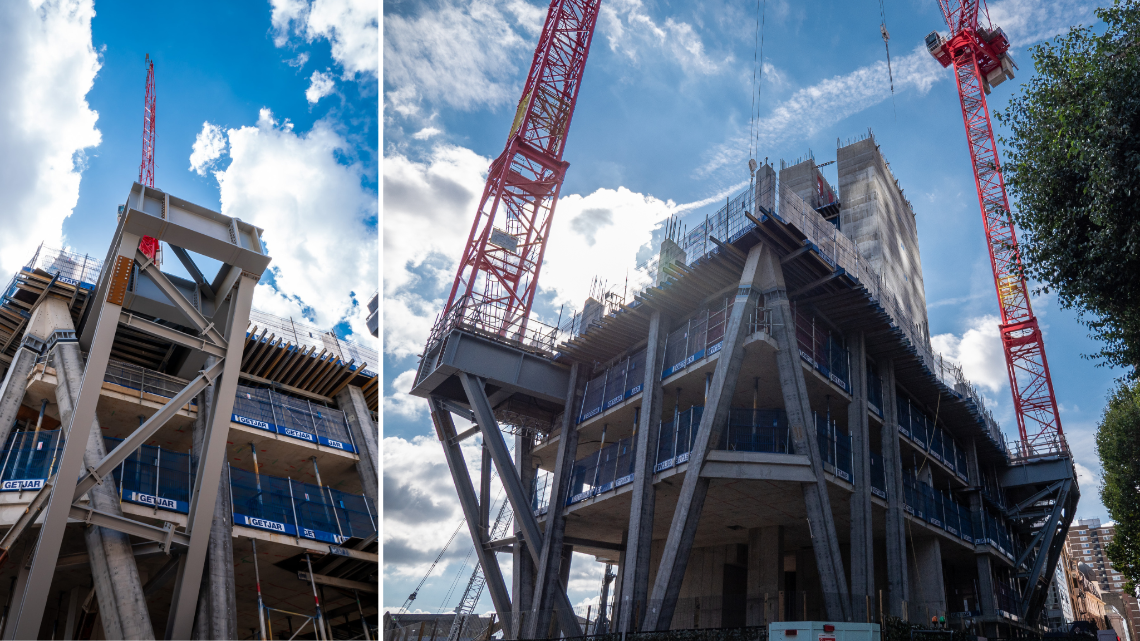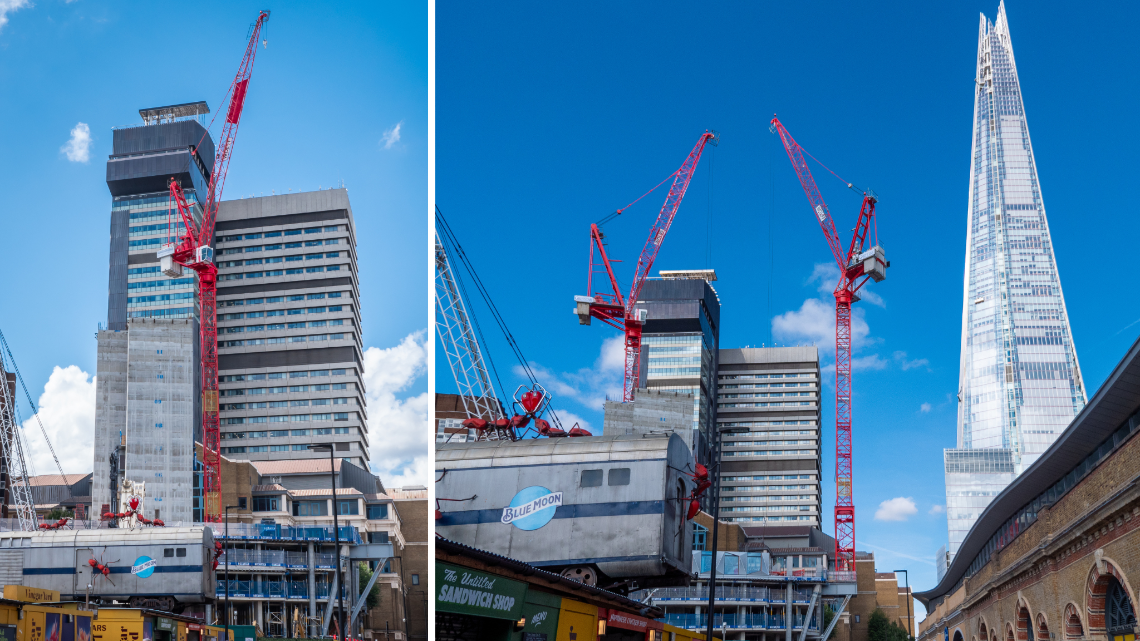- Media & Events
- Downloads
-
- Europe
- Belgium
- Germany
- United Kingdom
- France
- Norway
- Austria
- Switzerland
- Czech Republic
- North America
- Canada
- USA
- Middle East & Africa
- United Arab Emirates
- Saudi Arabia


12.10.2023 | News
If you want to see a tower crane up close, there is currently a remarkable building scheme in London that is worth checking out. The project, managed by a construction company, Mace, features two impressive WOLFF cranes, WOLFF 630 B and WOLFF 355 B, that appear to be suspended in the air.
London
WOLFF 355 B
WOLFF 630 B
Mace
Cantilevering steel grillage
Residential accommodation for students
When there is no room for a crane base
This construction project required a creative solution due to limited space, and it was executed in three stages.
In Stage 1, WOLFFKRAN has erected the WOLFF 355 B (TC1) on the foundation anchors at the basement level. With 35m jib, max capacity of 21t* and 54m tower, a crane built the tower core and erected WOLFF 630 B (TC2), moving the work into stage 2.
TC2 is in an unusual position - bolted to a steel grillage cantilevering from the building just below level 4. This crane with a 40m jib, a maximum capacity of 21t*, and a 47.25m tower will be tied and climbed four times to an impressive height of 119m.
In stage 3, TC2 dismantled TC1 and erected TC1a on the opposite side of the building. The new WOLFF 355 B also hangs from the building connected to a cantilevering steel grillage. TC1a, with a 40m jib, maximum capacity of 21t* and 47.25m tower, will be tied and climbed three times to achieve 114.75m of height.
Both cranes look impressive against the backdrop of Britain's tallest building, The Shard.
A few words about the project
Regarding the project itself, it aims to redefine modern, high-quality, eco-friendly student accommodation near the iconic London Bridge Station. This 138-meter tower will provide housing for 905 students and offer 15,000 sq. ft. of amenities. Sustainability is a core focus, with the entire building operating on electric power from a certified renewable energy supply and rooftop solar panels. Modern construction methods are also being utilized to minimize emissions from transportation, reduce concrete waste, and optimize water usage on-site.
*The lifting capacities of the cranes have been reduced by 25%.